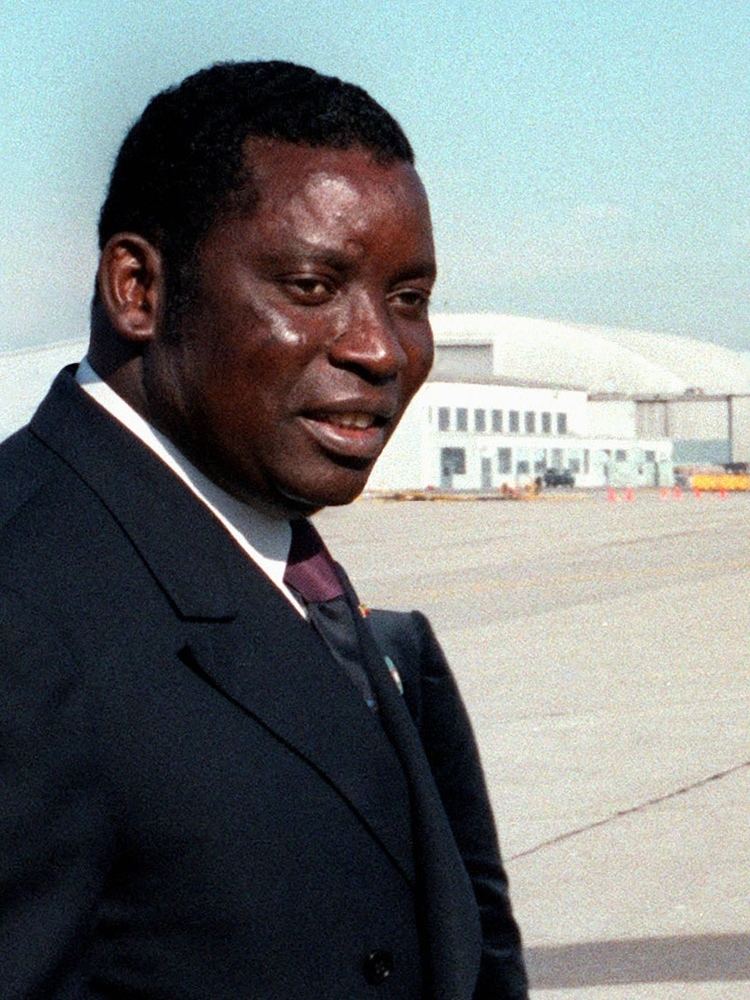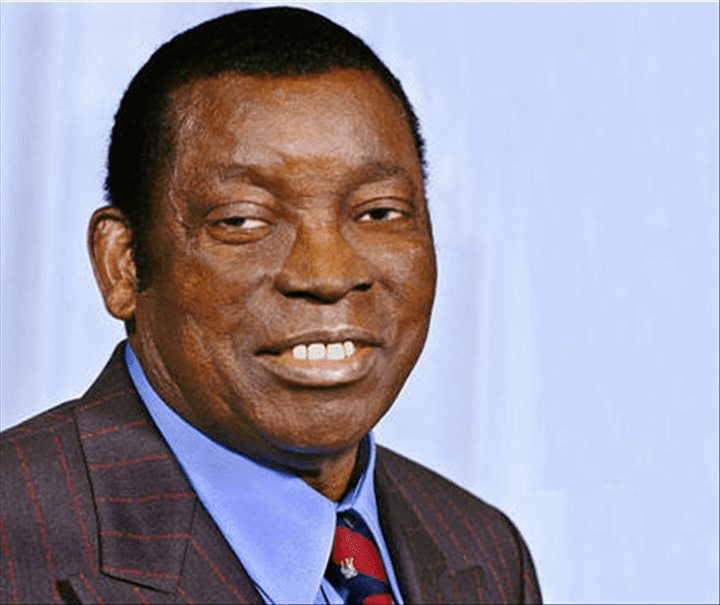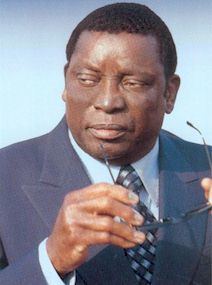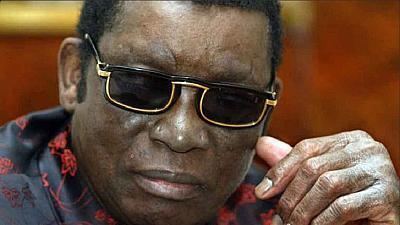Preceded by Kleber Dadjo Role Polit. Nationality Togolese | Religion Roman Catholicism Succeeded by Faure Gnassingbe Name Gnassingbe Eyadema | |
 | ||
Born December 26, 1935Pya, Togo ( 1935-12-26 ) Children Faure Gnassingbe, Kpatcha Gnassingbe Presidential terms April 14, 1967 – February 5, 2005, November 30, 1969 – May 8, 1974, May 8, 1974 – February 5, 2005 Similar People Faure Gnassingbe, Agbeyome Kodjo, Kpatcha Gnassingbe, Komi Selom Klassou, Koffi Sama | ||
Dictature gnassingbe eyadema togo history secret part 1
General Gnassingbé Eyadéma (born Étienne Eyadéma, December 26, 1935 – February 5, 2005) was the President of Togo from 1967 until his death in 2005. He participated in two successful military coups, in January 1963 and January 1967, and became President on April 14, 1967. As President, he created a political party, the Rally of the Togolese People (RPT), and headed an anti-communist single-party regime until the early 1990s, when reforms leading to multiparty elections began. Although his rule was seriously challenged by the events of the early 1990s, he ultimately consolidated power again and won multiparty presidential elections in 1993, 1998, and 2003; the opposition boycotted the 1993 election and denounced the 1998 and 2003 election results as fraudulent. At the time of his death, Eyadéma was the longest-serving ruler in Africa.
Contents
- Dictature gnassingbe eyadema togo history secret part 1
- Dictature gnassingbe eyadema togo history secret part 4
- Early life
- Politics
- Personality cult
- Death
- Dictature gnassingb eyad ma togo history secret part 5
- References

Dictature gnassingbe eyadema togo history secret part 4
Early life
Étienne Eyadéma Gnassingbé was born on December 26, 1935 in Pya, a village in the prefecture of Kozah in the Kara Region, to a peasant family of the Kabye ethnic group. According to Comi M. Toulabor, his official date of birth is “based on a fertile imagination” and it would be more accurate to say that he was born around 1930. His mother was later known as Maman N’Danida, or Maman N’Danidaha. In 1953, Eyadema joined the French army where he was trained in weapon use and the art of war. Eyadema participated in the French Indochina War and the Algerian War. After nearly 10 years in the French army, Eyadema returned to Togo in 1962. In 1963, he was a leader in the 1963 Togolese coup d'état against President Sylvanus Olympio, who was killed during the attack. He helped establish Nicolas Grunitzky as the new President of Togo. In 1967, Colonel Eyadema of the Togolese Army led a second military coup against Grunitzky. Eyadema installed himself as president on April 14, 1967, as well as Minister of National Defense, an office that he retained for 38 years.
Politics

Three years after taking power, Eyadéma created the Rally of the Togolese People as the country's only legal party. He won an uncontested election in 1972. In 1979, the country adopted a new constitution that returned the country (at least nominally) to civilian rule. The RPT was entrenched as the only party; the president of the party was automatically nominated for a seven-year term as president upon election to the party presidency and confirmed in office via an unopposed referendum. Under these provisions, Eyadéma was reelected unopposed in 1979 and 1986. During his rule he escaped several assassination attempts; in 1974 he survived a plane crash in the northern part of the country near Sarakawa. After another unsuccessful assassination attempt by a bodyguard, he carried the bullet removed by the surgeon as an amulet. A national conference was held in August 1991, electing Joseph Kokou Koffigoh as Prime Minister and leaving Eyadéma as merely a ceremonial president. Although Eyadéma attempted to suspend the conference, surrounding the venue with soldiers, he subsequently accepted the outcome. Despite this, Eyadéma managed to remain in power with the backing of the army. In March 1993, an unsuccessful attack was made on the Tokoin military camp, where Eyadéma was living; several people were killed in the attack, including Eyadéma's personal chief of staff, General Mawulikplimi Ameji.
He attempted to legitimize his rule with a multiparty presidential election in August 1993, which was boycotted by the opposition; facing only two minor challengers, he won 96.42% of the vote, although turnout was reportedly low outside of his native Kara Region. Eyadéma officially won re-election in the June 1998 presidential election, defeating Gilchrist Olympio of the Union of the Forces of Change (UFC) with 52.13% of the vote according to official results, amid allegations of fraud and accusations of the massacre of hundreds of government opponents. The European Union suspended aid in 1993 in protest of alleged voting irregularities and human rights violations.

In late December 2002, the Constitution was changed to remove term limits on the office of president. Previously, presidents had been limited to two five-year terms, and Eyadéma would have therefore been forced to step down after the 2003 election. With the removal of these limitations, however, Eyadéma was free to stand again and did so, winning the election on June 1 with 57.78% of the vote. He was sworn in for another term on June 20. Another constitutional change was to reduce the minimum age of the President to 35 years, rather than 45. As Eyadéma's son Faure Gnassingbé was 35, many observers assumed that he was opening the way for a dynastic succession should he die suddenly.
Eyadéma constructed a large palace near his family home in Pya a few kilometers north of Lama-Kara. He was the chairman of the Organisation of African Unity from 2000 to 2001, and he attempted, unsuccessfully, to mediate between the government and rebels of Ivory Coast in the First Ivorian Civil War, that began in that country in 2002.
The European Union sent a mission on June 1, 2004 to evaluate the state of democracy in Togo and to start a procedure of democratization of Togo. The expedition intended to open a dialogue between the state and the opposition. The team was supposed to meet with many politicians from other parties than Eyadéma's party, Rally of the Togolese People. But because of the criteria imposed by the government, politicians such as Gilchrist Olympio, Yawovi Agboyibo, and Professor Leopold Gnininvi boycotted the meeting. The European Union team cancelled the meeting since discussions with the government were almost impossible. The opposition party UFC wanted the release of 11 men held by the government. Finally, the European Union experts met each political figure individually and in private. The respect of human rights and of the press in Togo was another area to be investigated by the European Union experts.
According to BBC News, Eyadéma claimed that democracy in Africa "moves along at its own pace and in its own way."
Personality cult
Eyadéma had an extensive personality cult, including, but not limited to, an entourage of 1,000 dancing women who sang and danced in praise of him; portraits which adorned most stores; a bronze statue in the capital city, Lomé; $20 wristwatches with his portrait, which disappeared and re-appeared every fifteen seconds; and even a comic book that depicted him as a superhero with powers of invulnerability and super strength. In addition, the date of a failed attempt on President Eyadéma's life was annually commemorated as "the Feast of Victory Over Forces of Evil." Eyadéma even changed his first name from Étienne to Gnassingbé to note the date of the 1974 plane crash of which he was claimed to be the only survivor.
In reality, he was not the sole survivor of the crash on January 24, 1974. There were other survivors, but he deliberately misrepresented the details of the accident to make himself look like a hero with superhuman strength who miraculously survived the disaster when everyone else was killed. Eyadéma claimed that the crash was not an accident and was in fact a conspiracy to kill him, plotted by imperialists who did not like his plan (announced on January 10, 1974) to nationalize the important phosphate mining company, the Compagnie Togolaise des Mines du Bénin (CTMB or Cotomib). His C-47 was replaced by a new presidential jet, Gulfstream II, which was again damaged beyond repair in a fatal accident in the same year. Eyadéma was not on board this time.
Death
On February 5, 2005, he died in a plane 250 km south of Tunis, Tunisia. He died "as he was being evacuated for emergency treatment abroad", according to a government statement. Officials have stated that the cause of death was a heart attack. At the time of his death he was the longest-serving head of state in Africa.
Zakary Nandja, chief of the Togolese army, pronounced Eyadéma's son Faure Gnassingbé as the new President of Togo. Alpha Oumar Konaré, president of the Commission of the African Union, immediately declared this act to be a military coup d'état and against the constitution. Other organizations, such as the International Community and ECOWAS, also did not approve the designation of Faure Gnassingbé as President. Under heavy pressure from ECOWAS and the international community, Faure Gnassingbé stepped down on February 25 and was replaced by Bonfoh Abass, the first deputy parliament speaker, until after the presidential elections on April 24, 2005, when Faure Gnassingbé was elected president with 60% of the vote.
Eyadéma's funeral was held on March 13, 2005, in the presence of a number of Presidents and other international dignitaries; Presidents Mathieu Kérékou of Benin, John Kufuor of Ghana, Laurent Gbagbo of Ivory Coast, Mamadou Tandja of Niger and Olusegun Obasanjo of Nigeria attended the ceremony. On March 15, Eyadema's family and the RPT party paid him a final homage in his hometown of Pya.
